OCZ Vertex 3 MAX IOPS & Patriot Wildfire SSDs Reviewed
by Anand Lal Shimpi on June 23, 2011 4:35 AM ESTLet's start with the elephant in the room. There's a percentage of OCZ Vertex 3/Agility 3 customers that have a recurring stuttering/instability issue. The problem primarily manifests itself as regular BSODs under Windows 7 although OCZ tells me that the issue is cross platform and has been seen on a MacBook Pro running OS X as well.
How many customers are affected? OCZ claims it's less than two thirds of a percent of all Vertex 3/Agility 3 drives sold. OCZ came up with this figure by looking at the total number of tech support enquiries as well as forum posts about the problem and dividing that number by the total number of drives sold through to customers. I tend to believe OCZ's data here given that I've tested eight SF-2281 drives and haven't been able to duplicate the issue on a single drive/configuration thus far.
Most of the drives were from OCZ and I've tested them all on four separate platforms - three Windows 7 and one OS X. The latter is my personal system where I have since deployed a 240GB Vertex 3 in place of Intel's SSD 510 for long term evaluation. If you're curious, the 3 months I had the 510 in the MacBook Pro were mostly problem-free. It's always tough narrowing down the cause of system-wide crashes so it's hard to say whether or not the 510 was responsible for any of the hard-resets I had to do on the MacBook Pro while it was deployed. For the most part the 510 worked well in my system although I do know that there have been reports of issues from other MBP owners.
But I digress, there's a BSOD issue with SF-2281 drives and I haven't been able to duplicate it. OCZ has apparently had a very difficult time tracking down the issue as well. OCZ does a lot of its diagnostic work using a SATA bus analyzer, a device that lets you inspect what's actually going over the SATA bus itself rather than relying on cryptic messages that your OS gives you about errors. Apparently sticking a SATA bus analyzer in the chain between the host controller and SSD alone was enough to make the BSOD problem go away, which made diagnosing the source of the BSOD issue a pain.
OCZ eventually noticed odd behavior involving a particular SATA command. Slowing down timings associated with that command seems to have resolved the problem although it's tough to be completely sure as the issue is apparently very hard to track down.
OCZ's testing also revealed that the problem seems to follow the platform, not the drive itself. If you have a problem, it doesn't matter how many Vertex 3s you go through - you'll likely always have the problem. Note that this doesn't mean your motherboard/SATA controller is at fault, it just means that the interaction between your particular platform and the SF-2281 controller/firmware setup causes this issue. It's likely that either the platform or SSD is operating slightly out of spec or both are operating at opposite ends of the spec, but still technically within it. There's obviously chip to chip variance on both sides and with the right combination you could end up with some unexpected behaviors.
OCZ and SandForce put out a stopgap fix for the problem. For OCZ drives this is firmware revision 2.09 (other vendors haven't released the fix yet as far as I can tell). The firmware update simply slows down the timing of the SATA command OCZ and SF believe to be the cause of these BSOD issues.
In practice the update seems to work. Browsing through OCZ's technical support forums I don't see any indications of users who had the BSOD issue seeing it continue post-update. It is worth mentioning however that the problem isn't definitely solved since the true cause is still unknown, it just seems to be addressed given what we know today.
Obviously slowing down the rate of a particular command can impact performance. In practice the impact seems to be minimal, although a small portion of users are reporting huge drops in performance post-update. OCZ mentions that you shouldn't update your drive unless you're impacted by this problem, advice I definitely agree with.
What does this mean? Well, most users are still unaffected by the problem if OCZ's statistics are to be believed. I also don't have reason to believe this is exclusive to OCZ's SF-2281 designs so all SandForce drives could be affected once they start shipping (note that this issue is separate from the Corsair SF-2281 recall that happened earlier this month). If you want the best balance of performance and predictable operation, Intel's SSD 510 is still the right choice from my perspective. If you want the absolute fastest and are willing to deal with the small chance that you could also fall victim to this issue, the SF-2281 drives continue to be very attractive. I've deployed a Vertex 3 in my personal system for long term testing to see what living with one of these drives is like and so far the experience has been good.
With that out of the way, let's get to the next wave of SF-2281 based SSDs: the OCZ Vertex 3 MAX IOPS and the Patriot Wildfire.
The Vertex 3 MAX IOPS Drive
In our first review of the final, shipping Vertex 3, OCZ committed to full disclosure in detailing the NAND configuration of its SSDs to avoid any confusion in the marketplace. Existing Vertex 3 drives use Intel 25nm MLC NAND, as seen below:
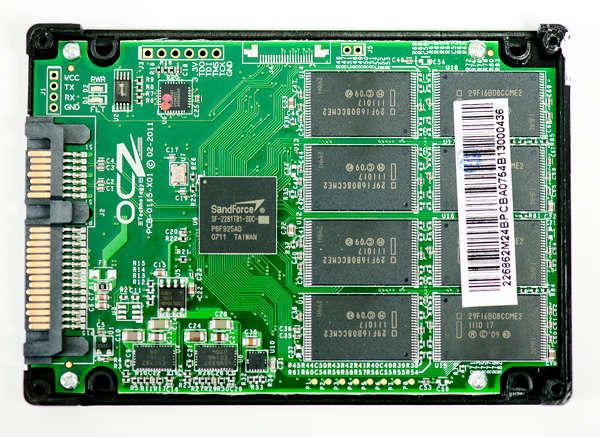
A 240GB Vertex 3 using 25nm Intel NAND
Not wanting to be completely married to Intel NAND production, OCZ wanted to introduce a version of the Vertex 3 that used 32nm Toshiba Toggle NAND - similar to what was used in the beta Vertex 3 Pro we previewed a few months ago. Rather than call the new drive a Vertex 3 with a slightly different model number, OCZ opted for a more pronounced suffix: MAX IOPS.
Like the regular Vertex 3, the Vertex 3 MAX IOPS drive is available in 120GB and 240GB configurations. These drives have 128GB and 256GB of NAND, respectively, with just under 13% of the NAND set aside for use as a combination of redundant and spare area.
The largest NAND die you could ship at 32/34nm was 4GB - the move to 25nm brought us 8GB die. What this means is that for a given capacity, the MAX IOPS edition will have twice as many MLC NAND die under the hood. The table below explains it all:
| OCZ SF-2281 NAND Configuration | |||||||
| Number of NAND Channels | Number of NAND Packages | Number of NAND die per Package | Total Number of NAND die | Number of NAND per Channel | |||
| OCZ Vertex 3 120GB | 8 | 16 | 1 | 16 | 2 | ||
| OCZ Vertex 3 240GB | 8 | 16 | 2 | 32 | 4 | ||
| OCZ Vertex 3 MI 120GB | 8 | 8 | 4 | 32 | 4 | ||
| OCZ Vertex 3 MI 240GB | 8 | 16 | 4 | 64 | 8 | ||
The standard 240GB Vertex 3 has 32 die spread across 16 chips. The MAX IOPS version doubles that to 64 die in 16 chips. The 120GB Vertex 3 only has 16 die across 16 chips while the MAX IOPS version has 32 die, but only using 8 chips. The SF-2281 is an 8-channel controller so with 32 die you get a 4-way interleave and 8-way with the 64 die version. There are obviously diminishing returns to how well you can interleave requests to hide command latencies - 4 die per channel seems to be the ideal target for the SF-2281.


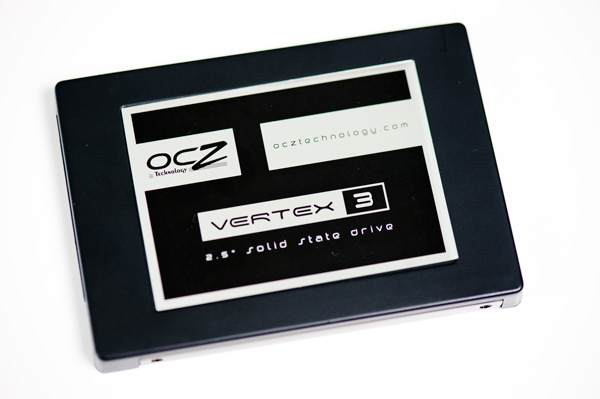
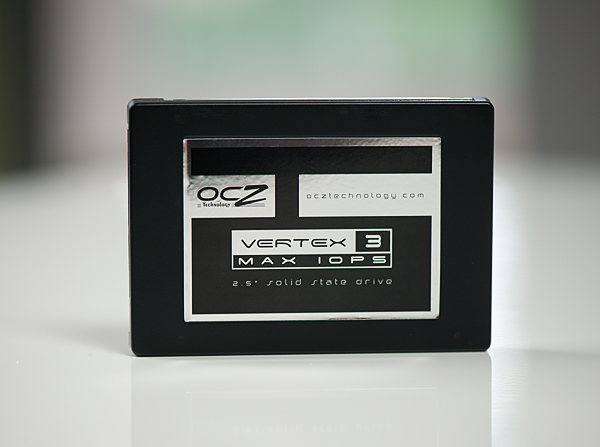
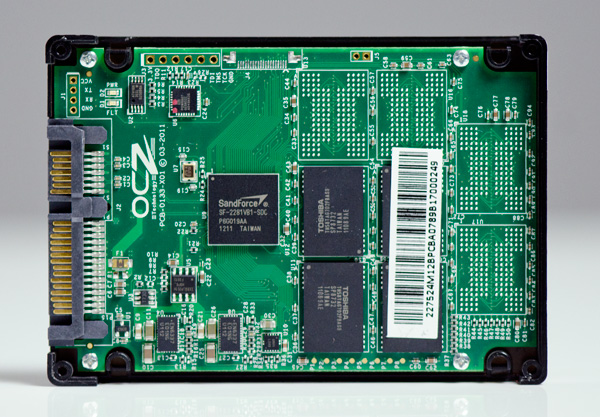
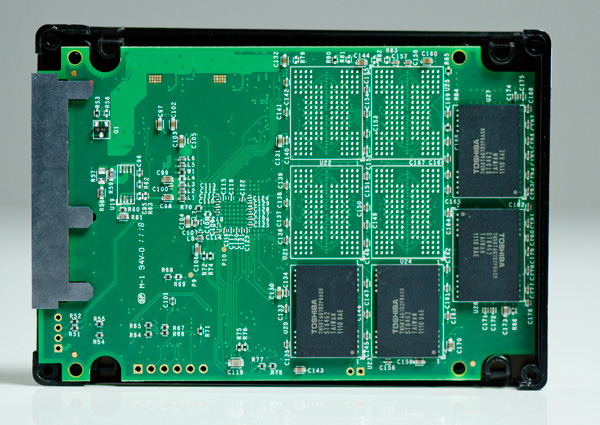
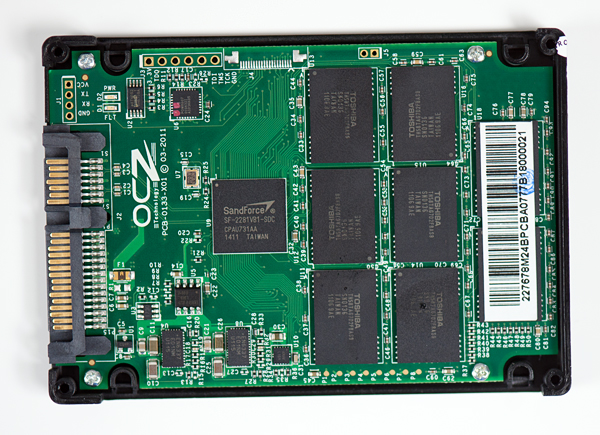
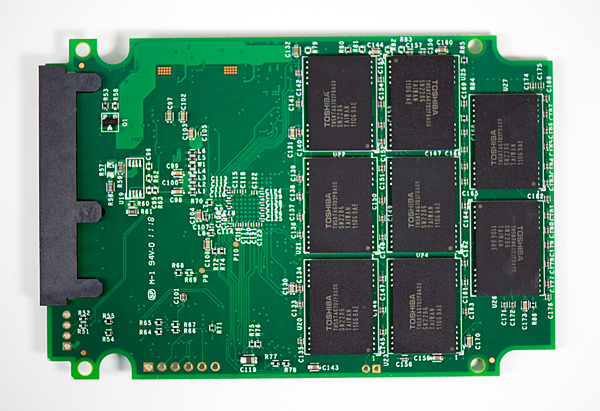








112 Comments
View All Comments
semo - Friday, June 24, 2011 - link
Thanks Anand. I appreciate your honesty and transparency. If it wasn't for you, Jmicron would have killed the momentum of SSD adoption. I'd hate to see the same thing happen again right under our noses.irev210 - Thursday, June 23, 2011 - link
I have to agree.Anand came out blasting the Intel G2 SSD when it first came out for a very MINOR firmware snafu... yet people angry about Intel SSD's or Samsung 470's are very few and far between.
Anand came out blasting Crucial for having firmware issues as well - with absolutely no follow up. The C300 ended up being an absolutely fantastic drive (though we do see more complaints vs. intel 320/510 and Samsung 470).
It's getting old that you admit that all SSD's share extremely similar performance but continue to recommend SSD's that are FAR more unreliable vs. other brands.
If "real-world" performance among SSD's, you should really look at things that distinguish one from another (reliability, warranty, long-term performance, trim/garbage collection features, raid performance, cost/gig evaluation, etc).
Frankly, I think consumers are at the point where a 1% chance of SSD failure isn't worth .05% increase in performance. While those exact numbers aren't easy to come by - that's why we want you, Anand, to get the dirt for us.
Anand Lal Shimpi - Thursday, June 23, 2011 - link
Intel was held to a higher standard simply because with the X25-M you had to give up performance and the promise was you would have something that was more reliable than the competition.The C300 had several firmware issues to begin with and didn't do well over time as we showed in our TRIM torture tests, it's the former that kept me from recommending it early on and the latter that kept me from being all that interested in it in the long run.
In the past two articles I've recommended the Intel SSD 510 and it was my personal choice of SSD for the past three months. I do have to allow for the fact that I have yet to have a single issue with any SF-2281 drive and some users may feel like they want to take a chance on something that's potentially faster (and has better write amplification characteristics).
If it was my money I'd stick with the 510 but until I see a readily repeatable situation where the SF-2281 drives have issues I have to at least mention them as an option.
Take care,
Anand
jwilliams4200 - Thursday, June 23, 2011 - link
"The C300 had several firmware issues to begin with and didn't do well over time as we showed in our TRIM torture tests, it's the former that kept me from recommending it early on and the latter that kept me from being all that interested in it in the long run."So, now that the Vertex 3 has had firmware issues, and now that your test in this article shows that its speed degrades terribly after torture tests, and somewhat even with TRIM....
Basically, now that the V3 is shown to have the same or worse problems as you complained about with the C300...
The question is, why are you not giving the Vertex 3 the same derogatory treatement that you gave the C300?
Anand Lal Shimpi - Thursday, June 23, 2011 - link
I've had multiple C300s die in my lab, not even trying to torture them (it looks like I may have just had another one die as of last night). Thus far I haven't had any SF-2281 drives die on me and I haven't experienced the BSOD issue first hand.The C300's performance degraded pretty poorly under harsh but still reasonable conditions. If you run the same torture test on a Vertex 3, its performance doesn't degrade.
It's only when you completely fill a SF-2281 drive with incompressible data, then randomly write small block incompressible data all over the drive for an hour that you end up in a situation with reduced performance. While random writes do happen on all drives, it's highly unlikely that you'll take your system drive, fill it with H.264 videos, delete those videos, install Windows on the drive and then run some sort of application that writes purely random data all over the drive. The torture test I created for the SF drives in particular is specifically designed to look at worst case performance if you're running a very unusual workload.
I did an 8-month investigation on SandForce's architecture that proved even in my own personal system I never saw the sort of worst case performance I was concerned about. The four drives we deployed across AT editors came back with an average write amplification of 0.6, as in most of the data that was written to the drive was actually deduped/compressed and never hit NAND. Based on that I don't believe most users will see the worst case performance I put forth on the TRIM page, the exception being if you're using this drive purely for highly compressed media or fully random data.
Take care,
Anand
jwilliams4200 - Thursday, June 23, 2011 - link
"The C300's performance degraded pretty poorly under harsh but still reasonable conditions."You call running HD Tach on an SSD "reasonable conditions"? Seriously?
seapeople - Thursday, June 23, 2011 - link
Yes, I'm sure OCZ loves the fact that Anand mentions the Intel SSD 510 as being the better drive overall considering reliability like five times in this review.Not only that, but he explains in depth on page 3 that the extra performance from the Vertex 3 and other latest generation SSD's doesn't even matter in normal computing situations.
So, Anand's options are this: 1) Say that SSD performance differences don't really matter and you should stop reading review sites like this and just go buy an Intel for reliability, or 2) Mention the irrelevancies of SSD performance differences in passing and continue on to do a full performance review which concludes that the Sandforce drives are, in fact, the fastest drives available today as long as you can get past the BSOD issues which may or may not affect you.
Just because Anand chose option 2 does not mean he is in OCZ's pocket, it just means he likes reviewing SSD performance. This is very fortunate for us readers who enjoy reading such articles.
Anand Lal Shimpi - Thursday, June 23, 2011 - link
You are very correct - I've tested eight (more coming) SF-2281 drives and haven't had any issues. However by the same logic the sample size of complaints on the forums isn't statistically significant either.Despite my sample size being what it is, I continue to have the discussion about quality control and testing in every SF-2281 drive. If there was a repeatable way to bring about the BSOD issue on any (or some?) readily available platforms I'd have no problems completely removing the drive from the discussion altogether. Unfortunately that doesn't seem to be the case.
Instead what I do is lay out the options for the end user. If you want the best overall reliability, Intel's SSD 320 is likely the drive for you. If you want the best balance of performance and reliability then there's the Intel SSD 510. And finally if you want to take a chance but want the drive with the lowest write amp for most users, there's anything SF-2281 based.
For me personally the choice was Intel's SSD 510. I've moved it to a secondary role in my system to try and bug hunt the Vertex 3 on a regular basis.
Take care,
Anand
Tomy B. - Thursday, June 23, 2011 - link
Why Samsung 470 isn't included in any results?Spoogie - Thursday, June 23, 2011 - link
1) The first Vertex II I received was DOA.2) The second died completely after just eight months of light use.
3) The BSODs occurred about once every six sleep modes. The Kingston replacement never gives a BSOD.
Buyer beware.